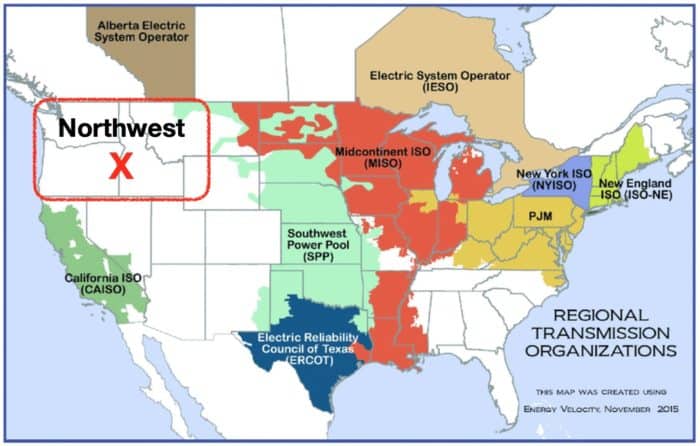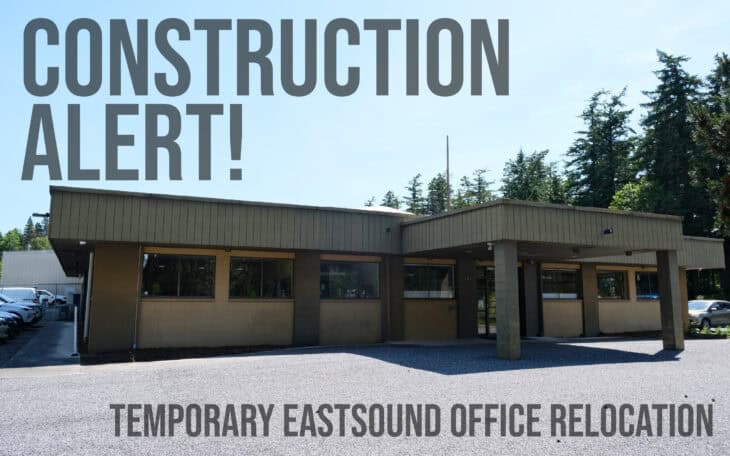Quick Fact: Where Does OPALCO Stand on Regional Power and the Dams?
Washington State and the Whitehouse have been evaluating what it takes to replace the Lower Snake River Dams (LSRD). Progress is being made, albeit slowly. This update looks at recent action taken by Washington in Senate Bill 5187 to fund a detailed analysis of what it would take to replace the LSRD while ensuring continued reliable, clean, affordable energy for the region.
For background, see the earlier sections, posted last year, following this update.
November 2023 Update
Following 2022 State and Whitehouse LSRD studies, the Washington legislature, in May 2023, allocated $2 million for an independent study to deepen understanding of what electricity generation, transmission, efficiency, and storage systems would be sufficient to offset LSRD energy production.
The replacement portfolio must diversify and improve resilience, maintain the reliability and adequacy of the electric power system, and meet the Clean Energy Transformation Act (CETA) net-zero emissions standards.
The devil is in the details, and the state requires the development of distinct scenarios that examine different potential cost and timeline potentials for the development and implementation of identified generation and transmission needs and options, including planning, permitting, design, and construction, including relevant federal authorities, consistent with the statutory and regulatory requirements of the CETA.
This is a good start. OPALCO has advised the state to pay careful attention to the land-intensive nature of solar and wind power. And the intermittent nature of solar and wind can lead to weeks of gray windless days that would require massive amounts of storage to ensure reliable, uninterrupted power, especially during winter cold snaps, when the LSRD power generation is most critical. Given that, the Senate bill requires analysis of expected trends and potential outcomes for electricity demand, generation, and storage technologies development, land use and land use constraints, and cost through 2050.
OPALCO has also warned of emerging Resource Adequacy challenges to regional energy reliability, as legacy fossil-fueled generation resources are rapidly decommissioned. The Senate Bill requires the development of a resource portfolio approach in which a combination of commercially available generating resources, energy efficiency, conservation, and demand response programs, transmission resources, and other programs and resources would be necessary prerequisites to replace the power and grid reliability services otherwise provided by the LSRD. They also want to see the time frame needed to put those resources into operation. This would include the Identification of generation and transmission siting options consistent with the overall replacement resource portfolio.
Importantly, there are specific actions aimed at maintaining system reliability and affordability, especially for overburdened communities.
Learn More:
Senate Bill 5187 (pages 95, 96, and 97)
https://lawfilesext.leg.wa.gov/biennium/2023-24/Pdf/Bills/Session Laws/Senate/5187-S.SL.pdf#page=1
BPA Lower Snake River Dams Power Replacement Study
https://www.whitehouse.gov/wp-content/uploads/2022/07/E3-BPA-LSR-Dams-Report.pdf
Lower Snake River Dams: Benefit Replacement Report
Recommendations of Governor Inslee and Senator Murray following the Conclusion of the Joint Federal-State Process on Salmon Recovery
https://governor.wa.gov/sites/default/files/2022-11/Murray-Inslee Process Recommendations.pdf
The region is facing a big transformation through decarbonization to combat climate change. Everything is at stake: environmental health, species survival, power affordability, regional control of power resources and concerns about having enough power to meet demand.
This situation involves lots of moving parts, major capital projects, government policies and funding—as well as conflicting stakeholder interests. OPALCO is following the issues closely and is at the table through its lobbyists at PNGC and WRECA. While the Co-op has little influence on regional power issues it is focusing its attention on what it can do: efficiency, conservation and local resiliency measures that will help members prepare for a new energy world and reduce carbon in our local environment.
There are proposals in the region to remove the four Lower Snake River Dams (LSRD). OPALCO supports the science-based approach taken by Governor Inslee and Senator Murray in their Lower Snake River Dams: Benefit Replacement Report.
In the Recommendations of Governor Inslee and Senator Murray following the Conclusion of the Joint Federal-State Process on Salmon Recovery, Governor Inslee and Senator Murray say, “…. we are adamant that in any circumstance where the Lower Snake River Dams would be breached, the replacement and mitigation of their benefits must be pursued before decommissioning and breaching. This is especially true in ensuring that reliable, dispatchable, and carbon-free energy is available and operating. Some assert that energy scarcity and environmental calamity are inevitable results of changing our approach to hydropower on the Lower Snake River Dams, and that doing so will derail the Pacific Northwest’s decarbonization goals as we confront the climate crisis. We believe that is an oversimplified binary choice, and it is one that we do not accept or see as inevitable.”
OPALCO’s mission is to provide reliable power to its membership. As soon as the region develops a reliable replacement plan for the power produced by the LSRD and full funding for the solution, OPALCO will be in a responsible position to carefully consider the situation and take a position on dam removal.
To fight climate change, the region is planning to double the amount of electricity it needs by 2050. The low-carbon northwest hydro system is a key part of the solution. The regional power plans in place today depend on all current hydro production to rapidly decarbonize emissions from transportation, heating and power in the coming decades.
To double electricity generation, the region is working to address four fundamental questions:
- Where will the new energy come from?
- For land-intensive energy like solar and wind power, where will it be located?
- How much will it cost?
- How long will it take to develop?
Keep in mind that all the wind power in the region, which took 25 years to develop, is a small fraction of what will be needed to meet a doubling of load and WA Clean Energy Transformation Act (CETA) requirements. Solutions will require millions of acres of land and many years to acquire, permit and develop.
In the meanwhile, OPALCO is taking aggressive action to replace fossil fuels with cleaner, lower-cost electricity for heating and transportation—including ferries. Removing carbon from our air and water is a significant contribution to the health of our marine environment and will have immediate results for the health of ALL species in the Salish Sea. Reduction of carbon-based ocean warming, acidification and vessel noise are critical to species survival.
Learn More:



